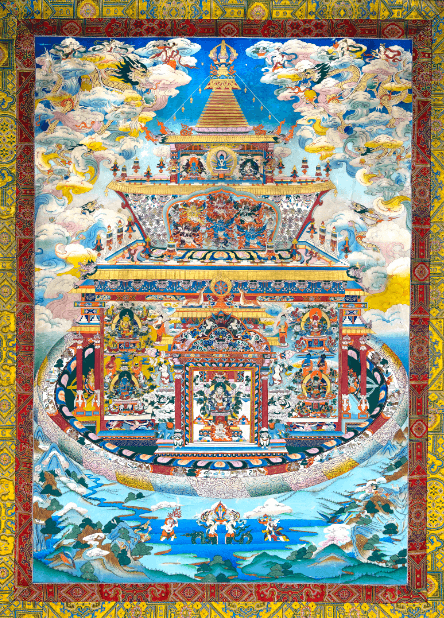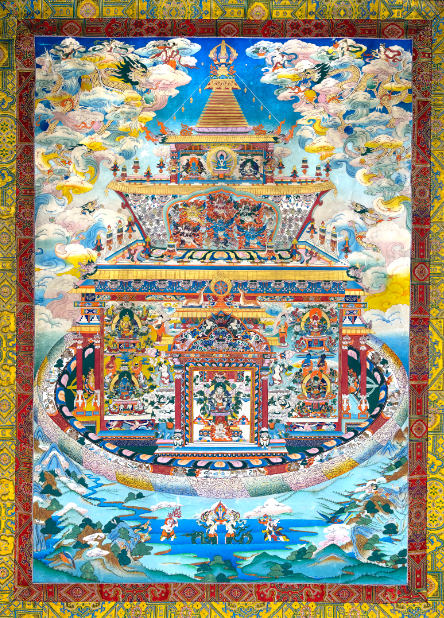Urgen
Dorje Sherpa
Courtesy of the artist

Urgen Dorje Sherpa started studying traditional thangka painting at the early age of nine and has been trained in Tibetan Buddhist art and philosophy in Nepal, Bhutan, and Tibet.
In the Nyingma tradition, the Guhyagarbha Tantra (from the 8th to the 10th century) consists of two basic mandala con fgurations — one of 42 peaceful deities and another of 58 wrathful ones. Combined, they are the 100 Peaceful and Wrathful Mahayoga Deities Mandala. This visual representation is considered to be one of the most important Tantras concerning life after death.
This thangka is additionally related to a terma (a treasure text), which was revealed in the 14th century and the Bardo Thodol (Tibetan Book of the Dead), which details the iconography for depicting the subject of the 'Bardo,' a liminal state of existence between death and rebirth. This terma is a guide intended to be read to the deceased to in fuence a swift and positive rebirth. While the mandala is usually painted in the circular form (an aerial view), in this work Dorje experiments by painting it in a linear perspective, structurally mirroring a chorten, or shrine

Location Map

Designed & Developed by: Curves n' Colors | Visual identity by: Wkshps
